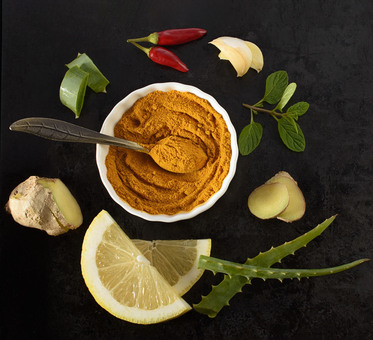
There are many measures to prevent infection with flu and cold viruses. If even the best hygiene is of no use, strong helpers from nature are available.
Wintertime is cold season. Everywhere people snort and cough - and before you catch a cold or even the flu, you should protect yourself well. A warm scarf alone is not usually enough. Good hygiene is important: if you wash your hands frequently and avoid touching objects that are highly frequented, you are already making a good contribution to your health. Especially when using shopping trolleys in the supermarket, door handles or handrails, the risk of getting infected is particularly high.
The annual wave of influenza usually starts in January, but lasts for three to four months. In addition, there are the numerous more harmless colds with their unpleasant and, in the worst case, protracted side effects. In addition to the much-discussed protective vaccination against influenza, there are other, chemical-free ways of protecting oneself as early as possible.
But what is the difference between a flu and a cold? A true flu, also called influenza, is a viral infection that mainly affects the respiratory tract. It can be recognized by the sudden onset of high fever accompanied by malaise, physical pain, headache, cold, sore throat and cough. The flu is highly contagious and patients should be in bed and under medical treatment for at least a week.
In contrast, a cold is an acute infectious disease of the mucous membranes in the throat, bronchi or nose. Causes are viruses, sometimes also additionally bacteria. Usually a cold begins with a runny nose, hoarseness and at night a severe cough and a very congested nose. Those affected feel weak and exhausted, have difficulty swallowing and breathing. At night, increased temperature may be added.
A gastro-intestinal flu is also transmitted by viruses. Noroviruses or rotaviruses, for example, cause severe diarrhoea with vomiting, usually accompanied by elevated temperature and general nausea. In healthy adults it subsides quite quickly. If it lasts longer than three days or in the case of children, medical treatment should be sought.
The flu virus, but also the common cold viruses are transmitted by droplets from sneezing or coughing and can be transmitted and spread very quickly through the objects that the sick person has touched. In addition to the tried and tested household remedies such as daily nasal showers, inhalations, sage tea and sage sweets or honey milk, one should drink a lot and ensure good air humidification in heated rooms. Vaccinations and antiviral drugs are available. However, due to side effects and the development of drug-resistant viruses, there is a great need for safer options. One of them is curcumin.
Turmeric is a spice that belongs to the ginger family. It has a strong aroma and spicy taste and a characteristic golden yellow colour. The most important bioactive component of turmeric is curcumin, which is blessed with a variety of extraordinary medicinal properties. Some of these properties make curcumin predestined to protect against flu and colds and to cure if you are already affected.
* This text may contain translation errors as the translation was performed by an online translation tool.










